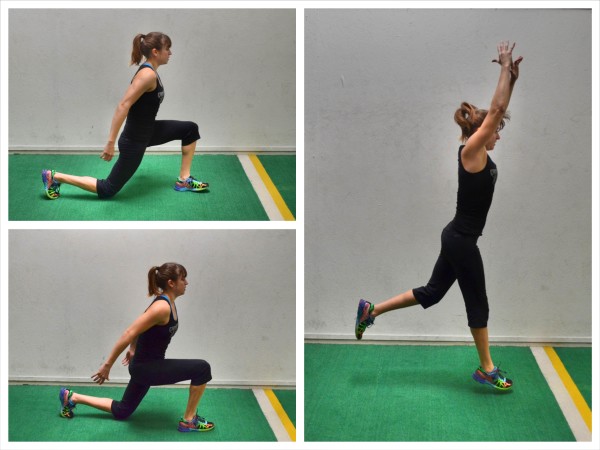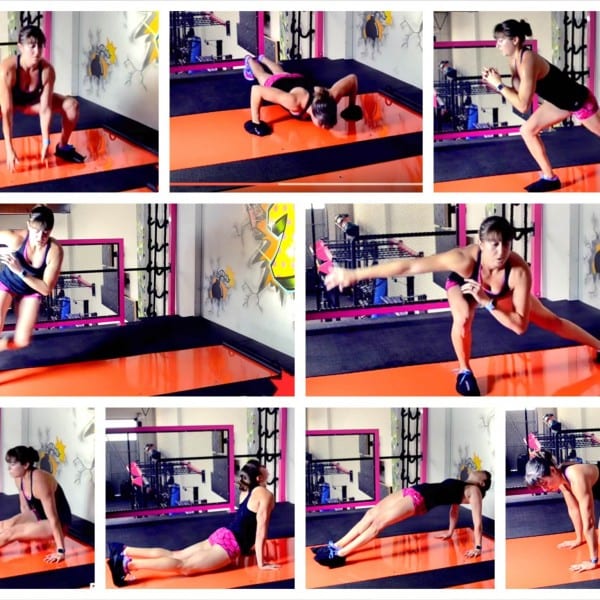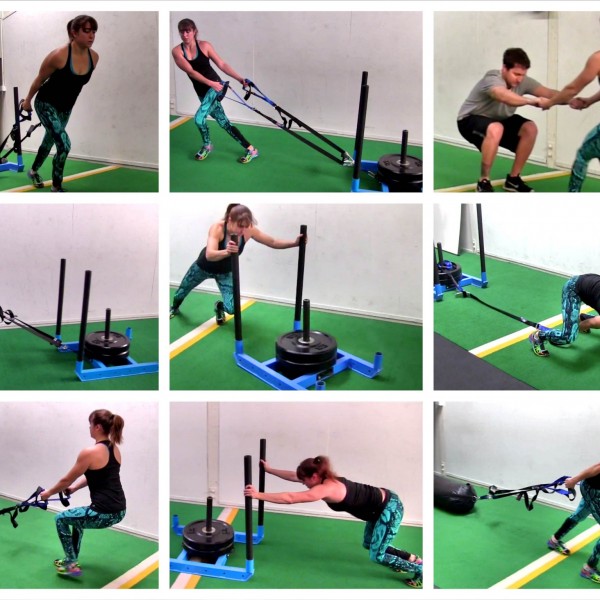
The Most Underrated Cardio Exercise
Want a great move to include in your bodyweight interval cardio workouts that isn’t jumping, but will for sure get your blood pumping?
Want a full-body core intensive move you can utilize in so many different ways?
Ready for a move you can modify to match your fitness level and progress when ready?
Then you’ll love this amazing bodyweight cardio move that will target your shoulders, arms, abs, obliques and even quads –
The Tabletop Crawl!
But wait?! Babies crawl…isn’t crawling easy?!
HECK NO!
This crawl will not only challenge your body but also your mind and coordination.
Unlike the Baby Crawl, your knees are going to hover off the ground.
And with the Tabletop Crawl, unlike the Bear Crawl, you want to focus on keeping your butt down and knees just a few inches off the ground.
You also want to focus on that contralateral movement pattern, or opposite arm and leg working together. This is a great way to improve your coordination, especially for movements like running!
While you can focus on moving faster only and allow a bit more rotation of your core as you crawl, you can also use this move to work on that anti-rotational core strength.
And then you can crawl in every direction using this tabletop or bulldog position, even mixing things up by adding in rotational moves like the Sit Thru, holds or even other crawl variations to the flow!
All of these things make this crawling variation a killer cardio move.
So how do you do the basic Tabletop Crawl?
Start on your hands and knees with your knees under your hips and hands under your shoulders. Starting out or to modify this move if you get out of sync as you go through this move, you can always come back to crawling on your hands and knees.
Tuck your toes under and then lift up onto the balls of your feet and hands so your knees hover just a few inches off the ground.
To start with the crawl forward, step forward with one hand and, as you do, step the opposite foot forward, bringing your knee in. Start with small steps and focus on keeping your hips still as you step.
Then step the other hand forward and other foot.
Think small steps as you brace your abs and keep your knees close to the ground. You can continue taking steps forward in this way with the opposite arm and leg moving together or you can reverse your direction and crawl backward.
When you crawl backward, be conscious of taking small steps, especially to start. This requires a bit more upper body strength than the forward crawl oddly enough and often we get more spread out, as we have a tendency to reach further back with our feet when crawling backward, placing more load on our upper body.
As you step one foot back, remember to step back with the opposite hand.
Using this basic forward/backward crawl, you can then add in occasional holds, or even a Sit Thru on each end of the length you’re crawling in. You can also add in little jacks or side to side hops if you want. Or you can even turn over to add in a crab crawl with this tabletop crawl.
You can also use this same crawling position to move LATERALLY.
How do you do the Lateral Tabletop Crawl?
The lateral crawl is a great move to improve your coordination and you may find the movement pattern a bit more challenging to start.
And if you’re thinking I’m too old for this move, you’re wrong! As we get older, including moves that work on our coordination and neuromuscular efficiency are even more key!
They keep us functional strong!
While you can make the lateral crawl an ipsilateral or same side working together movement, it is a great contralateral move.
To do the lateral crawl as a contralateral movement pattern with the opposite hand and foot working together, set up with your hands together under your chest and feet and knees about shoulder-width part.
Then step one hand out wide to the side so your hands are about shoulder-width apart as you step the opposite foot in toward the other. As your hands move apart, your feet move together.
Then to continue laterally, your foot on the same side as the hand you just moved will step to the side as you bring the opposite hand in to meet your other hand.
Move slowly to start keeping your knees hovering just off the ground. You can move as many steps as desired across the space you have then come back the other direction.
Focus on keeping your hips still as you move side to side.
Modifying The Basic Crawl:
While you can always go down to your hands and knees, to start, another way to modify this move that is often a bit more comfortable for the knees if your surface isn’t padded, is to use an incline.
For lateral crawls, you can use a bench as your incline and move along the length of it.
For forward/backward crawls, stairs actually work best as you can place your hands up on a higher step and crawl up a step at a time!
While often we will cheat and modify by allowing our butt to go up in the air during the basic crawl off the ground, we want to recognize this changes how we are activating muscles and will not give us the same ab or quad benefit that the basic tabletop or bulldog position does.
So using an incline can help us really master that positioning!
SUMMARY:
Crawling can be a great way to improve our coordination and our conditioning. It is a great move to include in an interval workout even with traditional moves we love like burpees, if we want to include jumping. It will work our entire core and get our blood pumping.
Try a fun Sit Thru crawling variation in this workout below:






